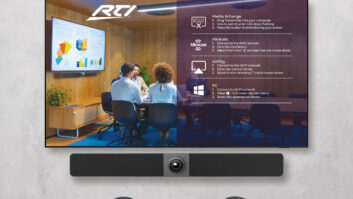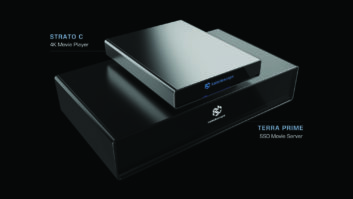Turning Your Client’s Home Into a Videomanor

Gordon van Zuiden ([email protected]) is president of cyberManor in Los Gatos, California.
The start of my company, cyberManor, just over a decade ago was based on the premise that data networks in the home would become as commonplace as they were on the enterprise side. The increasing presence of always-on broadband services to the home connected with more powerful and less expensive computing products created a fertile environment for us to offer data-based home networking solutions. Now, a decade later an equally attractive opportunity presents itself to the low-voltage integrator–residential video teleconferencing.
At this year’s Consumer Electronics Show, Creative Labs’ president and COO, Craig McHugh, stated that his company believes the use of video calling will increase exponentially. “After experiencing video calling on lower resolution handheld devices, users will want to integrate higher quality video calling into their business and professional lives,” he said. “We designed The Creative InPerson HD to support this coming shift to video calling by delivering a system that can upgrade virtually any large screen HDTV or HD display into a HD video calling system.”
And John Chambers, CEO of communications giant CISCO, helped to promote the recent introduction of CISCO’s new UMI teleconference product by proclaiming that video conferencing in the home will not only change the way we communicate with family members, but enhance education to the home, and healthcare solutions between doctors and their patients that can now stay at home.
We have already seen Apple’s introduction of FaceTime video conferencing on its iPod touch and iPhone platforms, and it is strongly anticipated that the next release of the company’s iPad will have a camera on both the front and back to support video conferencing. One might anticipate that a future software upgrade of the AppleTV platform will support FaceTime so that these mobile devices can directly videoconference with the HDTV in the family room. Expect the same video teleconferencing capabilities from all the Google Android camera-enabled tablets shown at this year’s CES show with the Logitech Google TV platform.
In the last few short months we have recognized the phenomenal success and power of the Microsoft’s new Kinect product platform. Initially introduced as a product to enhance a hands-free Xbox gaming experience, it is now seen as a platform for a whole host of new applications–a key one being video teleconferencing between users of the Kinect platform and other Microsoft Messenger clients. Unique to this product is its camera capability to follow the user around the room while you are talking.

John Chambers, CEO of communications giant CISCO, helped to promote his company’s new UMI teleconference product by proclaiming that video conferencing in the home will not only change the way we communicate with family members, but enhance education to the home, and healthcare solutions between doctors and their patients that can now stay at home.
It is clear that many of the larger consumer electronics companies have or will soon be offering video teleconferencing products for the home. As custom electronic integrators we probably will not make high margins on the sale of this hardware but we will make money on the integration of these hardware products into our client’s AV rack, the HDTV set, and the programming of the video conferencing control into our universal remote solutions. We may even sell an additional HDTV in the office or another location in the home just to enable these video teleconferencing solutions.
Teleconferencing products will differ on initial price, software platform, residential broadband speed requirements, camera capabilities, number of simultaneous video sessions, and web hosting services and prices. Understanding these parameters from various manufactures will put you in the strongest position to offer the best value-added solution to your clients.
To those initial integrators that fully understand the range of teleconferencing solutions from companies like Apple, Cisco, Microsoft, Logitech, and Creative Labs (to name a few), you may find that your knowledge of video teleconferencing solutions for the home may just be the advantage that rewards your whole-house integration proposal over those of your competitors.







